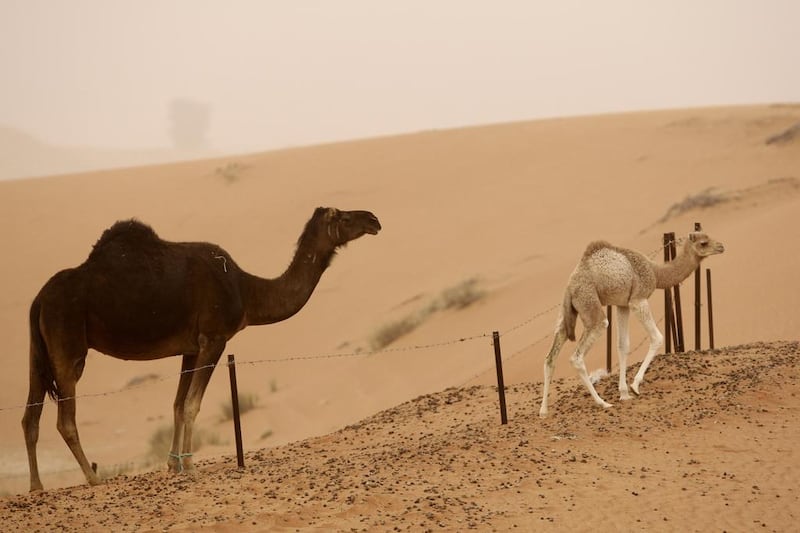ABU DHABI // An investigation of 39 Abu Dhabi camel farms found that 15 per cent had livestock with the Mers coronavirus, suggesting that farms are involved in its spread among animals or humans.
The Abu Dhabi Food Control Authority found that prevalence of the virus among camels tested was 3.7 per cent – more than double the rate reported in a separate study published last year.
The study, published in the journal Virus Genes, is believed to be the first report on the classification of the Mers virus in camels located in farms linked with human infection in the emirate. The authority tested livestock at three farms where owners had tested positive for Mers in 2014, as well as 37 others within a three-kilometre radius. Thirty-nine were camel farms and one was a sheep farm.
The authority conducted “a systematic surveillance” of the disease in camel farms, it said.
“We also added to the growing knowledge on the disease a solid proof that camels are major source of the virus that infect humans,” the authority said.
Forty-two out of 1,113 camels that were swabbed tested positive for Mers, while the sheep were virus-free. Infected camels were isolated and tested until they were found to be free of the virus, and the farms where they were found were disinfected.
“We found that the prevalence of Mers in camel farms varied from 1.8 per cent in one farm and 76.7 per cent in another farm,” the authority said.
When the authority tested 7,803 camels in slaughterhouses last year and at the Saudi and Omani borders in 2014, it found that 1.6 per cent of the animals had been infected. But researchers said that the prevalence could be higher in the most recent study because the sample came from farms that had or were near confirmed human cases of Mers.
“We must take into consideration that we concentrated on camel farms linked to human infections and also camels at the borders with [Saudi Arabia],” the authority said.
The authority previously found that camels at the borders and in slaughterhouse are more likely to be hot spots for potential animal infections.
“Therefore, our current procedure is to test camels, and positive camels are quarantined until they are free from the virus,” he said.
However, the latest findings among camels in local farms indicate that such farms could be “actively participating in the spread of the virus among animals or humans”, the researchers said.
Two of the infected owners “had repeated visits to these farms” and “were drinking raw camel milk”. The third infected farmer owned the sheep farm, but had recently visited Saudi Arabia, where he was exposed to camels.
All three owners were men in their sixties. Workers at the three farms tested negative for the virus, while milk and drinking water samples taken there also came back negative.
Four camel farms near one of the farms linked to human infection had livestock testing positive for Mers, suggesting that direct, airborne or surface transmission could be the route of virus spread among camel farms, according to the study.
“However, further investigation is needed to exclude the possibility that these farms became infected independently”, the researchers said.
The UAE ranks third, after Saudi Arabia and South Korea, for the number of Middle East Respiratory Syndrome infections among humans. Since the virus was first detected in 2012, there have been 1,791 laboratory-confirmed cases of human infections and 640 Mers-related deaths, according to the World Health Organisation.
rpennington@thenational.ae





